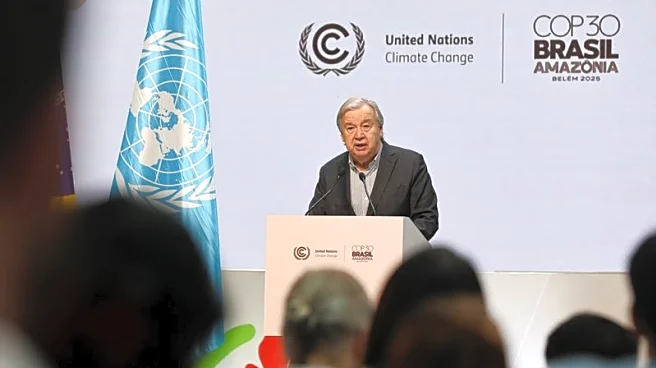What's Happening?
A new analysis by researchers from Brazil, Ecuador, Bolivia, Colombia, and the United States reveals that the risks faced by Amazonian communities from extreme weather events are significantly underreported.
The study compiled over 12,500 reports of storms, floods, landslides, droughts, and wildfires between 2013 and 2023. Despite major data gaps, the findings show that more than 3 million people were affected in a single year, with over 100,000 pieces of public infrastructure damaged. The study highlights the need for better data sharing and coordination across borders to address the mounting vulnerabilities faced by communities dependent on forests, rivers, and small-scale farming.
Why It's Important?
The underreporting of climate-related disasters in the Amazon has significant implications for the region's ability to respond to and mitigate these events. Without accurate data, it is challenging to develop effective strategies to protect vulnerable communities and ecosystems. The study underscores the importance of viewing the Amazon as a single system and designing transboundary strategies to enhance climate resilience. Improved data collection and sharing could lead to more effective disaster response and long-term planning, ultimately reducing the impact of extreme weather on the region's inhabitants.
What's Next?
The study calls for Amazonian countries to improve their data collection and sharing practices to better understand and address the impacts of climate change. This could involve developing standardized reporting systems and enhancing collaboration between governments, researchers, and local communities. By adopting a more integrated approach, the region can better prepare for future climate risks and protect its diverse ecosystems and populations.














